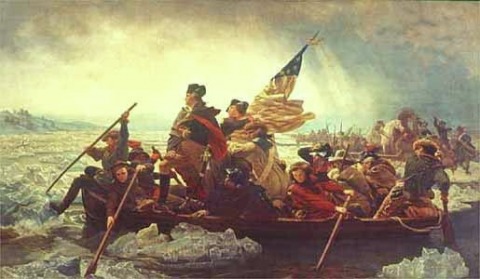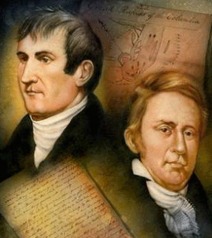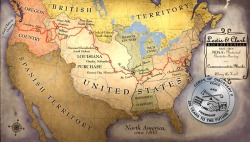African American Rights
Brown vs. Board of Education
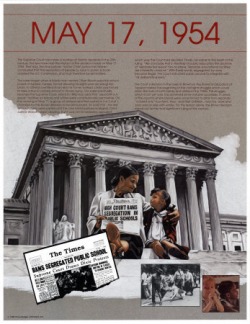
The famous case of Brown versus the Board of education started when the Supreme Court had five separate cases regarding racial profiling issues against African Americans in schools. These five cases were Belton versus Gebhart (Delaware), Bolling versus Sharpe (District of Columbia), Brown versus Board of Education (Kansas), Briggs versus Elliott (South Caroline), and Davis versus County School Board (Virginia). They decided to put the Brown versus Board of Education case first so that the question of this issue being only a southern issue wouldn’t be raised. This case relates back to Plessy versus Ferguson of 1896, which ended in separate but equal educational facilities for Blacks and whites. In 9954, there was a court ruling that these “separate but equal” schools were in fact separate and unequal. This case lead to the five cases in the Brown versus Board of Education case, which allowed African Americans to attend white schools. This was a big mile stone for the NAACP (National Association of the Advancements of Colored People).
Martin Luther King Jr.

“I have a dream"
These famous words were said by Martin Luther King Jr. He is remembered for his extreme determination to create progress in the Civil Rights movement. Some of his early accomplishments were leading the Montgomery Bus Boycott and he helped found the Southern Christian Leadership Conference as its first president. His famous “I had a dream” speech was for raising awareness of the Civil Rights Movement. While he was doing this he also established himself as the one of the greatest speaker in U.S. history. Before his death in 1958, he became the youngest person to receive a Nobel Peace Prize. He also started to focus on issues in poverty and the opposition to the Vietnam War.
These famous words were said by Martin Luther King Jr. He is remembered for his extreme determination to create progress in the Civil Rights movement. Some of his early accomplishments were leading the Montgomery Bus Boycott and he helped found the Southern Christian Leadership Conference as its first president. His famous “I had a dream” speech was for raising awareness of the Civil Rights Movement. While he was doing this he also established himself as the one of the greatest speaker in U.S. history. Before his death in 1958, he became the youngest person to receive a Nobel Peace Prize. He also started to focus on issues in poverty and the opposition to the Vietnam War.
Rosa Parks
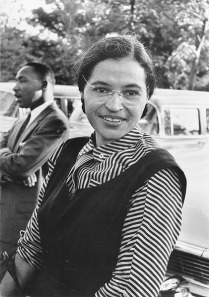
Rosa Parks is remembered for not giving up her seat on the White section of the bus when the bus driver, Jams Blake, told her to. She wasn’t the first to do this. Nine months prior to Rosa Parks, fifteen year old Claudette Clovin refused to give up her seat on the same bug line as Rosa Parks. Rosa Parks’s case was so ground breaking because it sparked the Montgomery Bus Boycott. The Montgomery Bus Boycott is when all the African Americans refused to take the bus. This was a great money loss for the bus line industry. This act by Rosa Parks gave her a name in Civil Rights history and an icon to resistance of racial segregation.
Separate but Equal
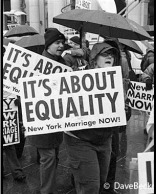
Separate but equal was a major concept of the Civil Rights. Many laws were passed to even get this far. Separate but equal simply meant that Blacks and whites would have separate facilities such as bathrooms, restaurants, water fountains, etc. but they had to be equal to one another. In other words the white could have a better facility while the African Americans had a rundown facility. Obviously this wasn’t this didn’t happen according to plan. The outsides of facilities could look equal but they didn’t go into each other’s facilities to see if the interiors of the facilities were equal. The African Americans realized they were separate and unequal. In the case of Plessy versus Ferguson, the separate but unequal was brought to the supreme courts attention.
American Revolution
The American Revolution was the political upheaval during the last half of the 18th century in which thirteen colonies in North America joined together to break free from England. They first rejected the authority of the Parliament of Great Britain to govern them from overseas without representation. By 1774 each colony had established a Provincial Congress, to form individual self-governing states.
Ultimately, the states collectively determined that the British monarchy, by acts of tyranny, could no longer claim their allegiance. They then cut off all ties with the British Empire in July 1776. The war ended with American victory in October 1781, followed by formal British abandonment of any claims to the United States with the Treaty of Paris in 1783.
Many fundamental issues of national governing were settled with the ratification of the Constitution of the United States in 1788, which replaced the relatively weaker first attempt at a national government, the Articles of Confederation of 1781. In contrast to the loose confederation, the Constitution established Declaration of Independence, a strong federated government. The United States Bill of Rights (1791), comprising the first 10 constitutional amendments, quickly followed.
Ultimately, the states collectively determined that the British monarchy, by acts of tyranny, could no longer claim their allegiance. They then cut off all ties with the British Empire in July 1776. The war ended with American victory in October 1781, followed by formal British abandonment of any claims to the United States with the Treaty of Paris in 1783.
Many fundamental issues of national governing were settled with the ratification of the Constitution of the United States in 1788, which replaced the relatively weaker first attempt at a national government, the Articles of Confederation of 1781. In contrast to the loose confederation, the Constitution established Declaration of Independence, a strong federated government. The United States Bill of Rights (1791), comprising the first 10 constitutional amendments, quickly followed.
Lewis and Clark Expedition
Lewis and Clark went on an expedition that was based in the united states to the Pacific coast and back. This expedition was the basis for all westward expansion to be set out in the near future within America. On their expedition they were assisted by Sacajawea, who acted as a buffer between them and the Native Americans who already inhabited the land before the Americans. The purpose of this expedition was to clarify the guidelines of the Louisiana Purchase. This was a section of land on the west coast that the Americans were buying from the French. They weren't 100% sure of how much land they were actually getting and what it was like. Their main objective of this expedition was to find a main water passage above North America, although they were clearly unsuccessful. They were not the first westward expedition in the Americas, but they were the most successful in other aspects of their journey. They tried to act as civil as they could towards people that were outsiders to them (the natives). There was little conflict, especially with Sacajawea as their buffer.
